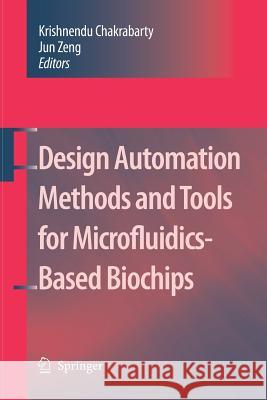Design Automation Methods and Tools for Microfluidics-Based Biochips » książka
Design Automation Methods and Tools for Microfluidics-Based Biochips
ISBN-13: 9789401781084 / Angielski / Miękka / 2014 / 403 str.
Design Automation Methods and Tools for Microfluidics-Based Biochips
ISBN-13: 9789401781084 / Angielski / Miękka / 2014 / 403 str.
(netto: 576,41 VAT: 5%)
Najniższa cena z 30 dni: 578,30
ok. 22 dni roboczych
Bez gwarancji dostawy przed świętami
Darmowa dostawa!
Microfluidics-based biochips, also known as lab-on-a-chip or bio-MEMS, are becoming increasingly popular for DNA analysis, clinical diagnostics, and the detection/manipulation of bio-molecules. These systems automate highly repetitive laboratory tasks by replacing cumbersome equipment with miniaturized and integrated systems, and they enable the handling of small amounts, e.g., nanoliters, of fluids. Thus they are able to provide ultra-sensitive detection at significantly lower costs per assay than traditional methods. As the use of microfluidics-based biochips increases, their complexity is expected to become significant due to the need for multiple and concurrent assays on the chip, as well as more sophisticated control mechanisms for resource management. Time-to-market and fault tolerance are also expected to emerge as design considerations. As a result, current full-custom design techniques will not scale well for larger designs. There is a need to deliver the same level of CAD support to the biochip designer that the semiconductor industry now takes for granted. Design Automation Methods and Tools for Microfluidics-Based Biochips deals with all aspects of design automation for microfluidics-based biochips. Experts have contributed chapters on various aspects of biochip design automation. Topics that are covered include device modeling; adaptation of bioassays for on-chip implementations; numerical methods and simulation tools; architectural synthesis, scheduling and binding of assay operations; physical design and module placement; fault modeling and testing; reconfiguration methods.











